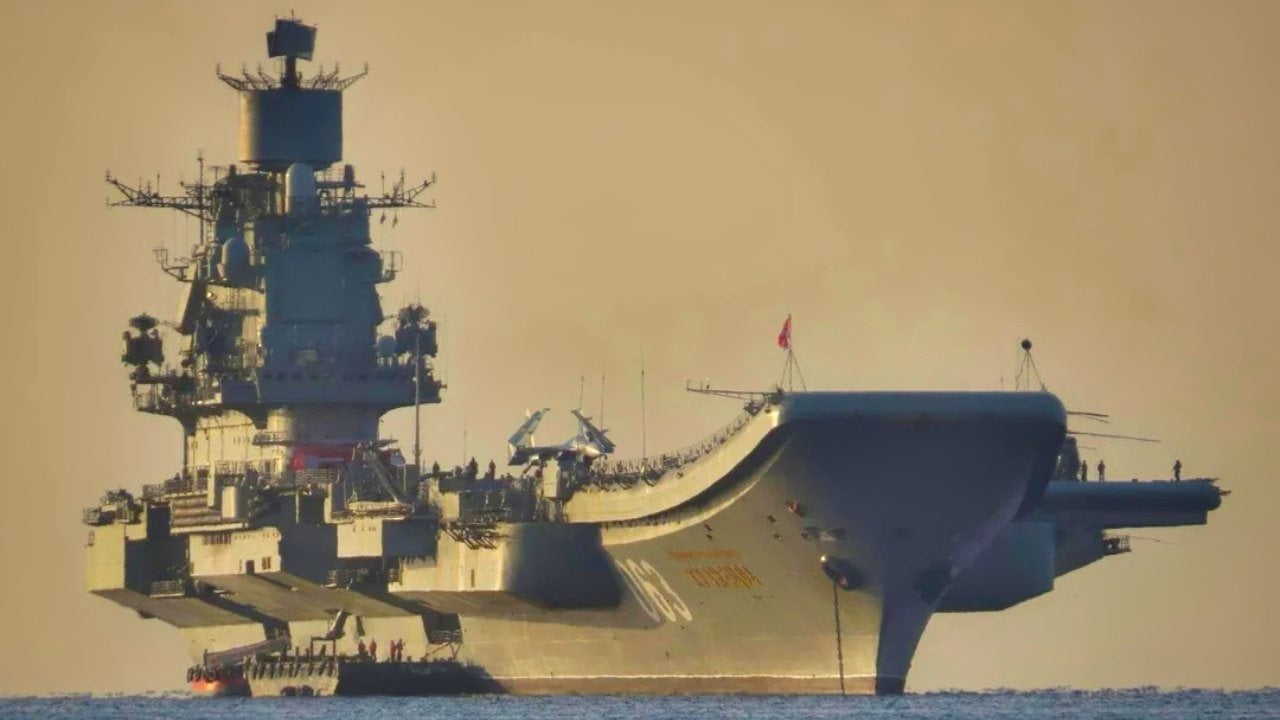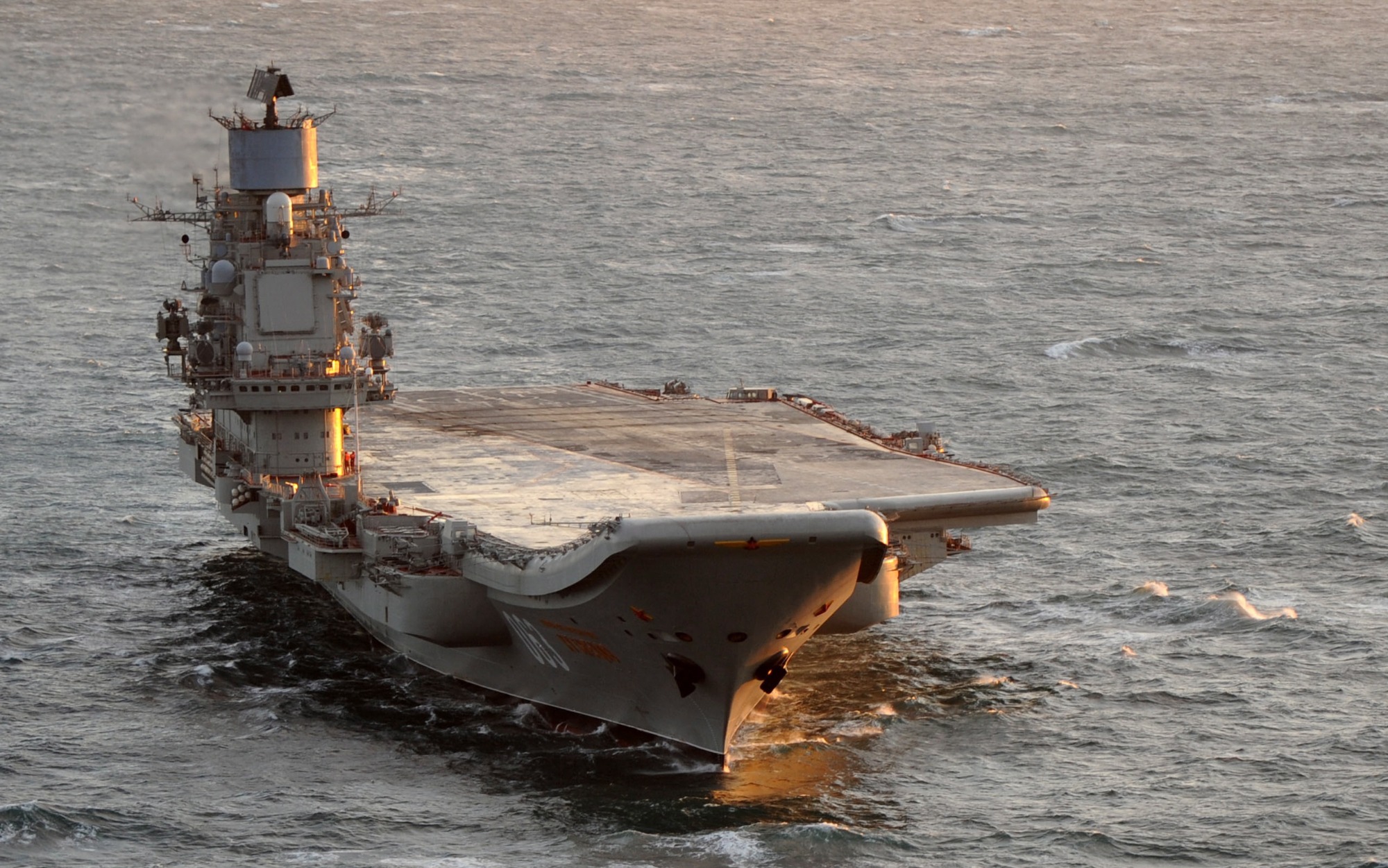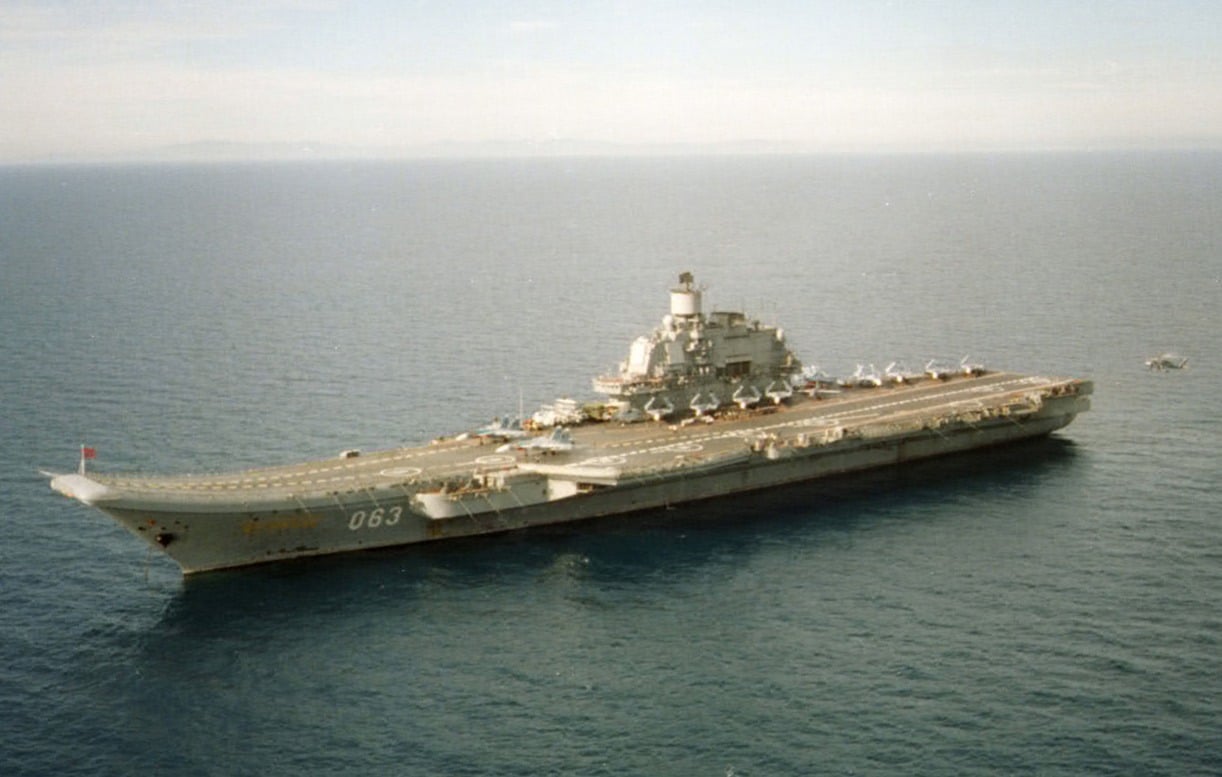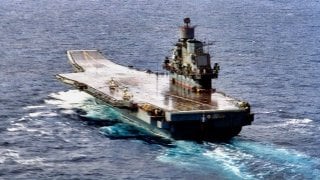Russia's Admiral Kuznetsov: 2 Words That Mean This Aircraft Carrier Is Finished
Russia’s ambition to match U.S. naval power through an aircraft carrier fleet has long been hindered by geographic constraints and limited warm-water ports. Historically, Russia has favored heavy firepower over carrier-based power projection.
Totally Obsolete: Russia’s ambition to match U.S. naval power through an aircraft carrier fleet has long been hindered by geographic constraints and limited warm-water ports. Historically, Russia has favored heavy firepower over carrier-based power projection.

-Today, advancements in anti-access/area-denial (A2/AD) systems, hypersonic missiles, and drones render carriers increasingly vulnerable. Unlike the U.S., which is deeply invested in carrier-based strategies, Russia can avoid this “sunk-cost” trap. As the Ukrainian conflict shows, traditional naval dominance may be less relevant, highlighting the carrier’s limitations in modern warfare.
-A shift from carriers could better position Russia for future strategic influence in Eurasia.
Why Russia’s Geography Limits Its Naval Power Dreams
Russia is a continental power. Spanning 11 time zones across from the Baltic Sea to the Pacific Ocean, this historic land power has dreamt of becoming a naval superpower. Yet, with only four warm water ports, and more land borders than maritime ones, this desire to become a great navy has always been little more than wishful thinking. Certainly, Russia during the Soviet era developed a potent navy—especially in terms of heavy-cruisers and nuclear submarines.
But Soviet and now, Russian naval doctrine as well as its strategic objectives were fundamentally different from those of its primary rival, the United States Navy.
Whereas the United States is essentially a giant island (surrounded by the Pacific and Atlantic Oceans as well as the Gulf of Mexico), the US has enjoyed far greater naval power than the Russians ever will—or can—by the simple reality of America’s geography.

Because of this, the United States developed a powerful fleet in which gigantic, nuclear-powered aircraft carriers were the basis of all its power projection capabilities. For the Russians, their fleet was centered upon the cost-effectiveness of heavy firepower sans aircraft carriers.
Back in the Cold War, the Soviets coveted America’s aircraft carrier capability. In the 1980s, as everything in the USSR was collapsing, Moscow spent exorbitant sums of money that it did not have to build its own carrier capability.
The Admiral Kuznetsov was the result of that effort. Still in service today (kind of), the Russian flat top is the butt of all jokes worldwide. To be frank, the Russian carrier is a floating disaster. The Russians keep it around to maintain a modicum of carrier capability—although neither the Russian military nor any other military would take seriously the threat that the Admiral Kuznetsov posed.

Aircraft Carriers are Obsolete
Unlike during the Cold War days, anti-area/access denial (A2/AD) capabilities have evolved to such a point that they, in conjunction with hypersonic missiles, unmanned underwater vehicles (UUV) as well as unmanned aerial vehicles (UAV), and submarines have all congealed into the perfect carrier-killing machines.
Therefore, the idea that the Russian Navy would waste even a single ruble building any kind of flat top strains credulity. What’s more, the fact that Russia’s conflicts that would involve its navy are all closer to Eurasia, means that the Russian military does not really need to build costly aircraft carriers for power projection.
Just look at the Ukraine War. The one area where Ukraine has consistently performed well against Russia has been in the maritime domain. Sadly for Kiev, Ukraine is a mostly ground war rather than a naval war. So, the superior Russian ground forces can attrite the beleaguered Ukrainians to their breaking point.
This, despite the fact that Ukraine’s drones have been incredibly successful in sinking or damaging key Russian warships moored at Russia’s historic Black Sea fleet headquarters in Sevastopol. The loss of the Black Sea Fleet’s flagship, the Moskva, for instance did little to damage Russian power projection into Ukraine.
Yet, if Russia built a serious aircraft carrier, that ship would be threatened by the same kinds of antiship systems that China today is threatening US carriers within the Indo-Pacific and that Iranian-backed militants, like the Houthi Rebels in Yemen, are threatening US carriers with in the Greater Middle East.
The Americans are locked into the sunk cost that is the aircraft carrier. No other nation today needs to make their mistake.
In fact, the nation that first recognizes the obsolescence of the flat top and acts accordingly will be the nation that likely dominates in the next war. If Russia truly wanted to compete with America for primacy in Eurasia, it would not waste its time on costly, complex, and easy targets, like the aircraft carrier.
Author Experience and Expertise: Brandon J. Weichert
Brandon J. Weichert, a National Interest national security analyst, is a former Congressional staffer and geopolitical analyst who is a contributor at The Washington Times, the Asia Times, and The-Pipeline. He is the author of Winning Space: How America Remains a Superpower, Biohacked: China’s Race to Control Life, and The Shadow War: Iran’s Quest for Supremacy. His next book, A Disaster of Our Own Making: How the West Lost Ukraine, is due October 22 from Encounter Books. Weichert can be followed via Twitter @WeTheBrandon.
All images are Creative Commons or Shutterstock.
From the Vault
Russia Freaked Out: Why the U.S. Navy 'Unretired' the Iowa-Class Battleships
Battleship vs. Battlecruiser: Iowa-Class vs. Russia's Kirov-Class (Who Wins?)


